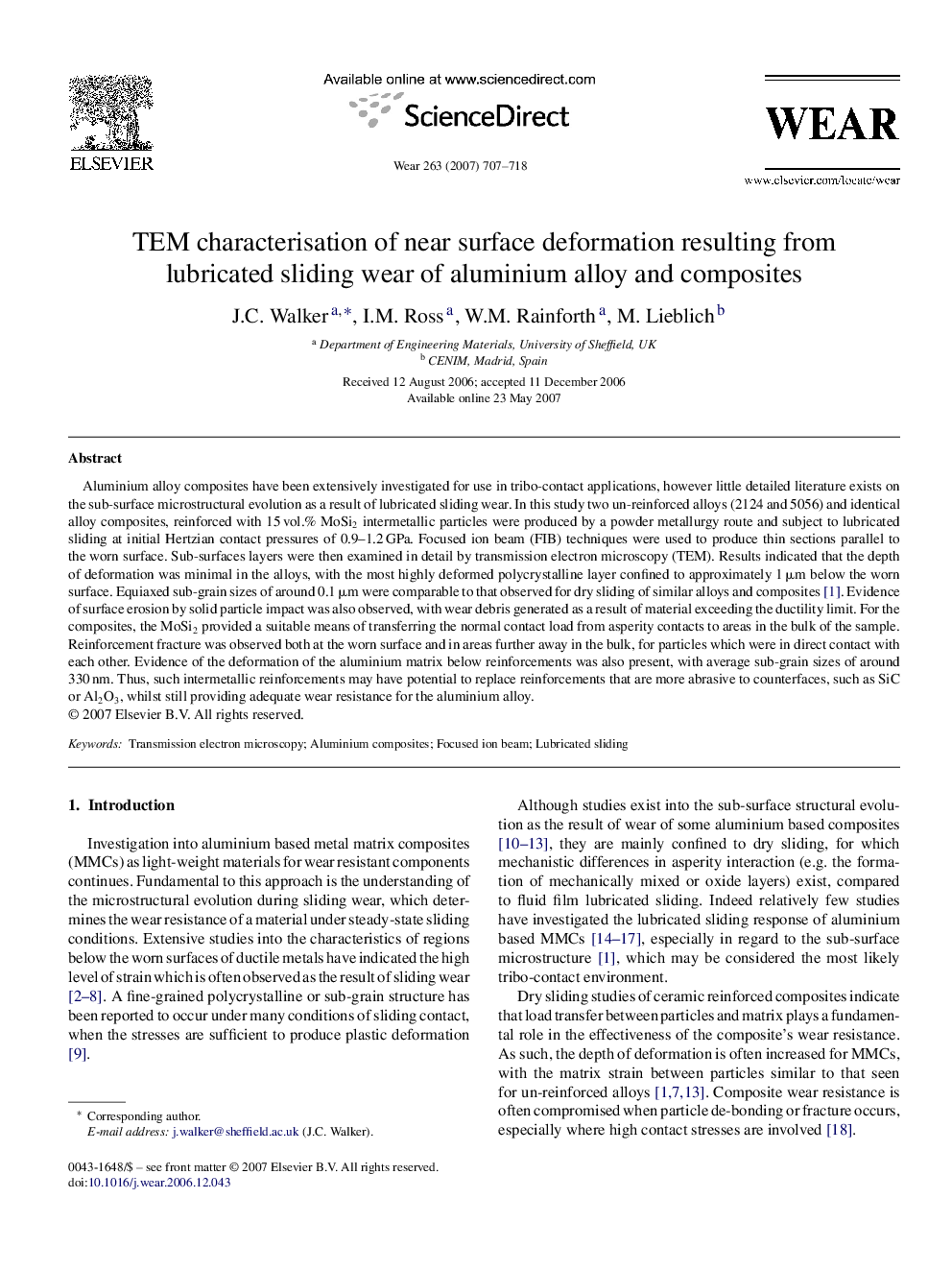| کد مقاله | کد نشریه | سال انتشار | مقاله انگلیسی | نسخه تمام متن |
|---|---|---|---|---|
| 619882 | 1455064 | 2007 | 12 صفحه PDF | دانلود رایگان |

Aluminium alloy composites have been extensively investigated for use in tribo-contact applications, however little detailed literature exists on the sub-surface microstructural evolution as a result of lubricated sliding wear. In this study two un-reinforced alloys (2124 and 5056) and identical alloy composites, reinforced with 15 vol.% MoSi2 intermetallic particles were produced by a powder metallurgy route and subject to lubricated sliding at initial Hertzian contact pressures of 0.9–1.2 GPa. Focused ion beam (FIB) techniques were used to produce thin sections parallel to the worn surface. Sub-surfaces layers were then examined in detail by transmission electron microscopy (TEM). Results indicated that the depth of deformation was minimal in the alloys, with the most highly deformed polycrystalline layer confined to approximately 1 μm below the worn surface. Equiaxed sub-grain sizes of around 0.1 μm were comparable to that observed for dry sliding of similar alloys and composites [1]. Evidence of surface erosion by solid particle impact was also observed, with wear debris generated as a result of material exceeding the ductility limit. For the composites, the MoSi2 provided a suitable means of transferring the normal contact load from asperity contacts to areas in the bulk of the sample. Reinforcement fracture was observed both at the worn surface and in areas further away in the bulk, for particles which were in direct contact with each other. Evidence of the deformation of the aluminium matrix below reinforcements was also present, with average sub-grain sizes of around 330 nm. Thus, such intermetallic reinforcements may have potential to replace reinforcements that are more abrasive to counterfaces, such as SiC or Al2O3, whilst still providing adequate wear resistance for the aluminium alloy.
Journal: Wear - Volume 263, Issues 1–6, 10 September 2007, Pages 707–718